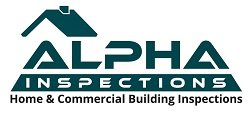
For homeowners, a properly functioning garage is more than a convenience—it’s a vital component of home safety and security. Regular maintenance, including aligning garage door sensors, is essential to ensure seamless operation. Picture arriving home during a downpour to find your garage door unresponsive. The culprit could be misaligned sensors! Here’s a simple guide to align your garage door sensors, stay out of the rain, and inside your garage with ease.
What are They?
Garage door sensors are safety devices that communicate with the garage door opener, featuring an emitter and receiver placed on opposite sides of the door. Their crucial role is to prevent the door from closing if an obstruction—like a child or pet—passes through. Misalignment can disrupt this communication, posing safety risks and operational issues.
When Might You Need to Align Your Garage Door Sensors?
Sensors can become misaligned due to accidental bumps or vibrations from daily operations. When your garage door refuses to close or reverses unexpectedly, it’s likely time to adjust the sensors. A keen eye on these indicators can prevent future inconveniences.

Time to Align Your Garage Door Sensors
Ensuring your garage door sensors are properly aligned is a key step in home maintenance that can save you from unexpected hassles.
Step-by-Step
- Safety First: Before you begin, ensure your safety by disconnecting the garage door opener from the power source. This prevents any accidental activation of the door while you’re working.
- Locate the Sensors: Identify the garage door sensors located on either side of the door, near the ground. One is the sending sensor and the other, typically with a green light, is the receiving sensor.
- Loosen and Adjust: Gently loosen the screws or wing nuts on the brackets holding the receiving sensor. You don’t need to remove them completely—just enough to allow the sensor to move freely.
- Realign: Carefully pivot the receiving sensor, looking for the point where it faces directly across from the sending sensor. Watch for the green light to become steady, which indicates a clear connection.
- Fine-tune: It may take a few slight adjustments to get the alignment just right. Move the sensor incrementally, waiting a moment each time to see if the light stabilizes.
- Tighten and Test: Once the green light is steady, carefully retighten the screws or wing nuts without moving the sensor out of alignment. Reconnect the power to the door opener and test the door to ensure it closes correctly.
- Check the Alignment: If the door still doesn’t close, or the lights on the sensors are flickering, double-check the alignment. It may require a few more adjustments to get it perfect.
- Look for Obstructions: Ensure there’s nothing on the tracks or around the sensors that might block the signal or cause misalignment. Even small debris or cobwebs can interfere.

Other Recommended Maintenance
Maintaining the balance of your garage door is just as crucial, ensuring that it moves smoothly and doesn’t exert unnecessary strain on the opener. If your door seems off-kilter or strains as it moves, it could indicate that it’s time for a rebalancing.
In tandem with sensor and door balance checks, evaluate the lifespan and functionality of your garage door opener. This device is the muscle behind your garage door’s movement. Understanding its condition can help you anticipate when a replacement might be necessary, effectively budgeting for it before an untimely failure.
While focusing on these components, don’t overlook the importance of routine inspections of the tracks, springs, and cables. These elements work in unison to facilitate the seamless operation of your garage door. Any issues with these parts can lead to bigger problems, sometimes unrelated to the sensors themselves. For instance, a door that won’t close after sensor alignment could signal a problem with the drive chain or a worn-out spring.
Regular lubrication of moving parts will also prolong the life of your garage door system. Use a garage door-specific lubricant to keep these parts operating smoothly, and always clean any excess off to prevent the attraction of dust and grime.
When to Call a Professional
If after realigning your sensors your garage door still exhibits signs of malfunction—such as refusing to close, reversing without obstruction, or making unusual noises—it may be indicative of a more complex issue that lies beyond a simple DIY fix.
The expertise of a professional is invaluable when it comes to intricate electronic problems, high-tension parts like springs, or alignment issues that resist all your efforts. A trained technician can diagnose problems that are not apparent to the untrained eye. Moreover, attempting to repair high-tension parts like springs can be dangerous without the proper tools and know-how.
Professionals can also provide comprehensive maintenance that will extend the life of your garage door system, identifying potential issues before they become major problems. They have the experience to suggest upgrades or replacements that could improve the functionality and safety of your garage system. In cases where your warranty may be at risk due to self-repair, a professional ensures that your repairs are compliant with the terms.
Conclusion
In summary, remembering to align your garage door sensors is crucial yet simple. It ensures that your garage door responds correctly, protecting your family and your vehicle from potential harm.
By embracing the responsibility of routine maintenance and recognizing when to call in the experts, you maintain not only the functionality but also the longevity of your garage door system. When in doubt, or to schedule an in-depth home inspection, reach out to Alpha Building Inspectors today.



